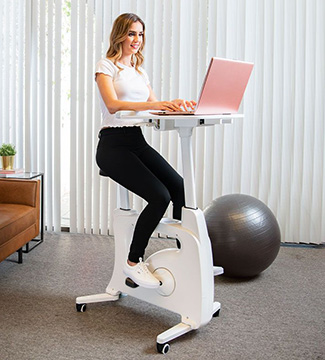Enhancing Productivity and Well-Being
In today’s fast-paced and technology-driven work environment, maintaining a healthy and productive lifestyle is of utmost importance. One aspect that often gets overlooked is the design and setup of our office spaces. Creating an ergonomic office environment not only prioritizes the well-being of employees but also positively impacts their productivity and overall job satisfaction. In this article, we will explore the significance of an ergonomic office and delve into the numerous benefits of standing and stand-up desks.

The Ergonomic Office: What Does It Entail?
An ergonomic office refers to a workspace that is designed to optimize the well-being and comfort of individuals while they perform their daily tasks. It takes into account the physical and cognitive needs of employees, focusing on factors such as proper posture, efficient use of space, lighting, noise levels, and appropriate equipment placement. A well-designed ergonomic office environment promotes productivity, reduces the risk of musculoskeletal disorders, and enhances overall employee satisfaction.
The Benefits of Standing and Stand-Up Desks
- Improved Physical Health: Sitting for prolonged periods has been linked to a range of health issues, including obesity, cardiovascular disease, and back pain. Introducing standing and stand-up desks into the office encourages movement, engages muscles, and burns calories. By alternating between sitting and standing positions, employees can reduce the negative effects of a sedentary lifestyle and improve their overall physical health.
- Increased Energy and Focus: Standing and engaging in light physical activity throughout the workday can help combat the mid-afternoon slump and maintain higher energy levels. Standing desks promote blood circulation and oxygen flow, which in turn enhances cognitive function, alertness, and mental clarity. By reducing fatigue and increasing focus, employees can work more efficiently and effectively.
- Enhanced Posture and Spinal Health: Prolonged sitting often leads to poor posture and back pain. Standing desks encourage better alignment of the spine and promote an upright posture. The ability to adjust the height of a standing desk ensures that employees can maintain proper ergonomic positioning, reducing strain on the neck, shoulders, and lower back.
- Boosted Productivity and Creativity: Several studies have indicated that using standing desks can positively impact productivity. Standing encourages a more dynamic and active work style, stimulating creativity and idea generation. Employees may experience improved problem-solving abilities, increased collaboration, and better communication due to the natural inclination to move and engage with their environment.
- Reduced Risk of Chronic Diseases: Prolonged sitting has been associated with an increased risk of chronic diseases such as type 2 diabetes, heart disease, and certain types of cancer. Incorporating standing and stand-up desks into the office routine helps mitigate these risks by promoting a healthier lifestyle and reducing sedentary behavior.
Implementing Ergonomic Changes in the Office
- Height-Adjustable Desks: Provide employees with the option to switch between sitting and standing positions by incorporating height-adjustable desks into the office layout. This versatility accommodates individual preferences and physical needs.
- Ergonomic Chairs: Choose chairs that offer proper lumbar support and adjustable features, allowing employees to maintain optimal posture while seated.
- Monitor Placement: Position computer monitors at eye level, ensuring that employees do not strain their necks or slouch while working.
- Keyboard and Mouse Placement: Place keyboards and mice at a comfortable distance, allowing employees to maintain relaxed and neutral wrist positions.
- Regular Movement and Breaks: Encourage employees to take short breaks and engage in stretching or light exercises throughout the day. This practice helps reduce muscle fatigue, improves circulation, and promotes overall well-being.
Conclusion
Investing in an ergonomic office design, which includes standing and stand-up desks, is a wise decision that can yield significant benefits for both employees and employers. By prioritizing the physical and mental well-being of individuals, businesses can foster a more productive and engaged workforce. Standing desks, along with other ergonomic considerations, play a pivotal role in reducing health risks, improving posture, enhancing productivity, and fostering a positive work environment. So, let’s take a stand for better health, productivity, and overall job satisfaction by embracing the power of ergonomics in our workplaces.






